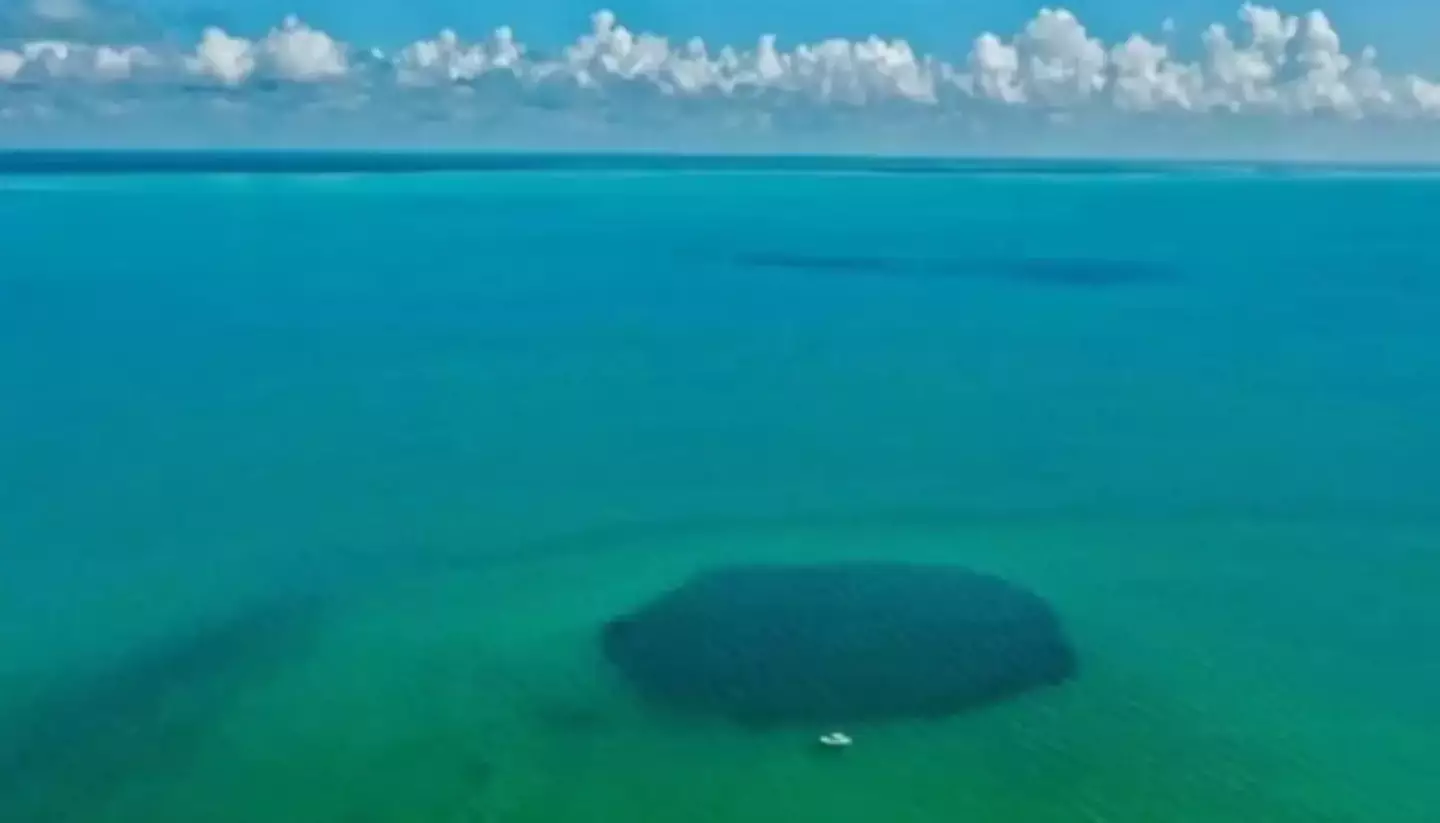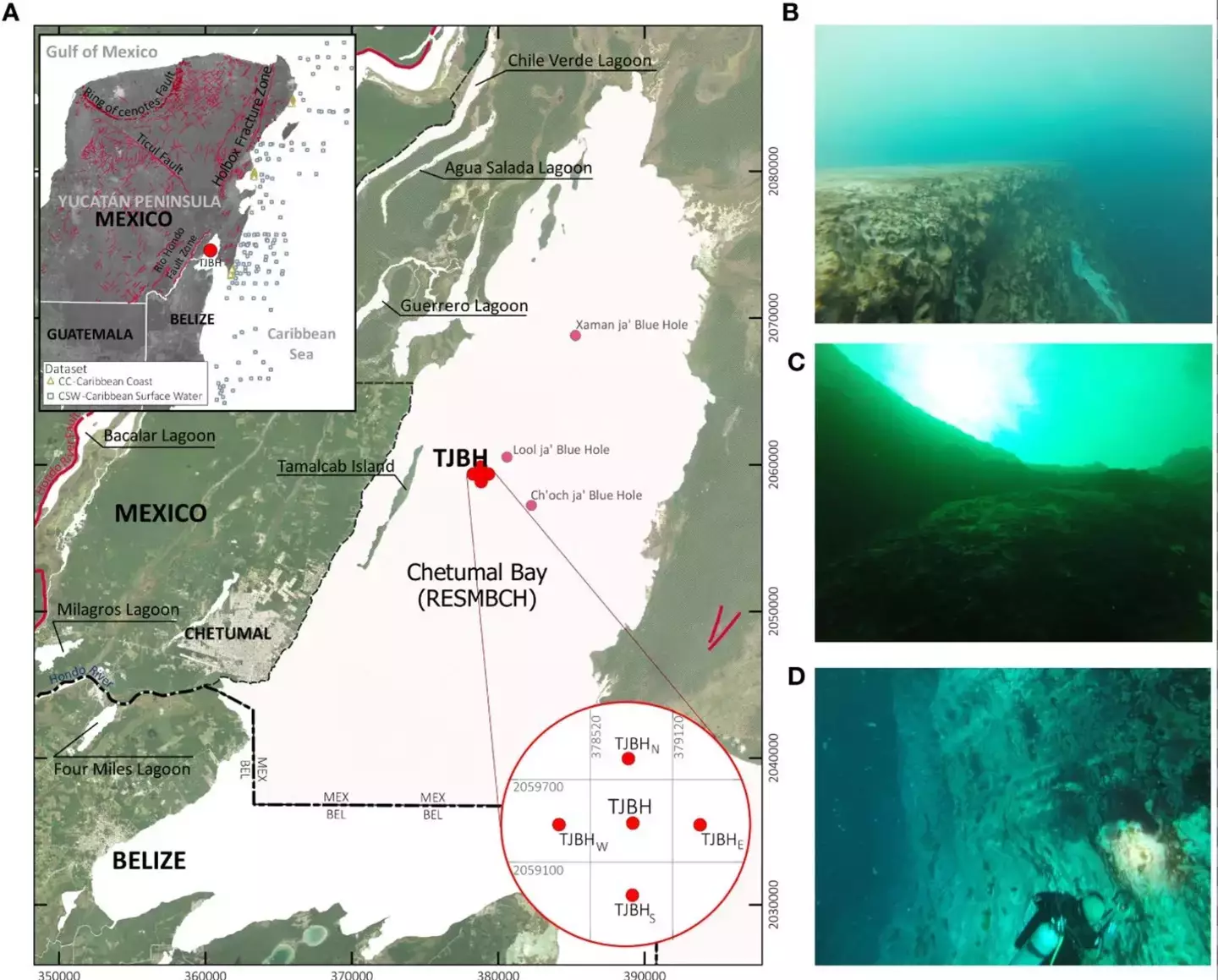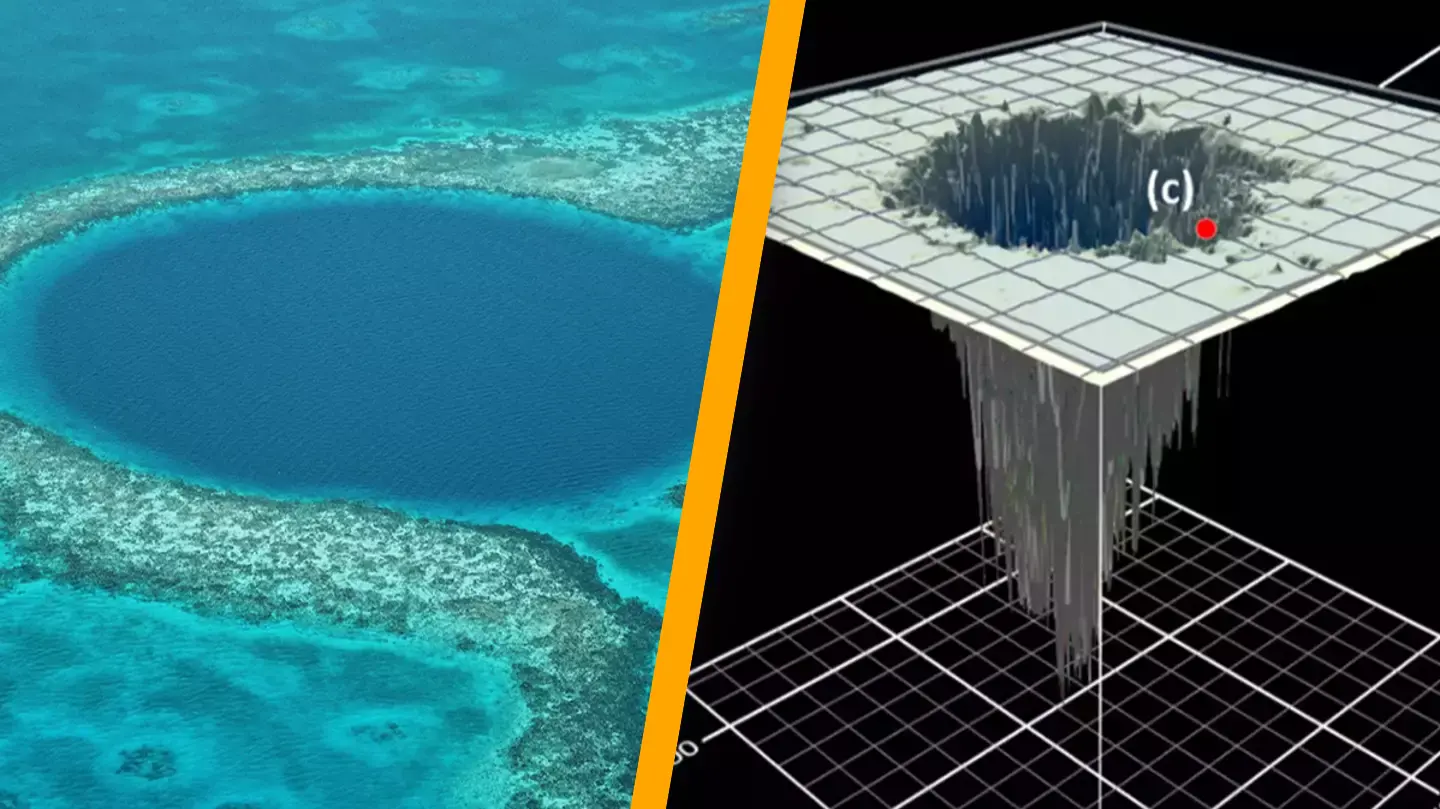Researchers now believe they have determined the depth of a specific blue hole, suggesting it could be the largest ever recorded.
The ocean remains a captivating frontier, with our understanding of it constantly evolving.
Located just off the Yucatan Peninsula, near the borders of Mexico and Belize, scientists have identified what they consider the ‘deepest known blue hole’ on Earth.
This immense underwater feature is thought to extend at least 1,380 feet beneath the ocean’s surface. Naturally, this has drawn significant attention from those intrigued by the mysteries of the ocean’s most profound and obscure depths.
Remarkably, researchers have yet to explore its deepest reaches.
A study published in the journal Frontiers in Marine Science explores the vastness of this blue hole and discusses its potential implications for future underwater research, including the study of marine life and the formation of ‘blue holes.’

These features are essentially marine sinkholes, believed to have been shaped over millennia by glacial meltwaters during the Ice Age.
Typically reaching depths of several hundred meters below the ocean’s surface, blue holes offer intriguing opportunities for study, although many divers have yet to explore their deepest points.
A major concern for divers is the low oxygen levels within these formations. Furthermore, some blue holes contain hydrogen sulfide, a toxic gas, necessitating specialized training and equipment for safe exploration.
Previously, the largest known blue hole, the Taam Ja’ Blue Hole (TJBH), was estimated to be 900 feet deep. However, in December last year, measurements revealed it to be even deeper, extending further towards the seabed.

The initial underestimations were attributed to the limitations of echo-sounder technology, which employs sound waves to measure depth.
This time, the research team utilized a conductivity, temperature, and depth (CTD) profile to obtain more precise measurements, gaining a better understanding of the hole’s full extent.
Although the CTD profile reached a depth of 1,380 feet, it is capable of extending to 1,640 feet. Whether it actually reached the bottom or was obstructed is still under investigation.
Another intriguing discovery was a layer of water below the 1,312-foot mark that appeared similar to the Caribbean Sea, suggesting possible connections between these underwater marine caves, though further research is necessary to confirm this.

